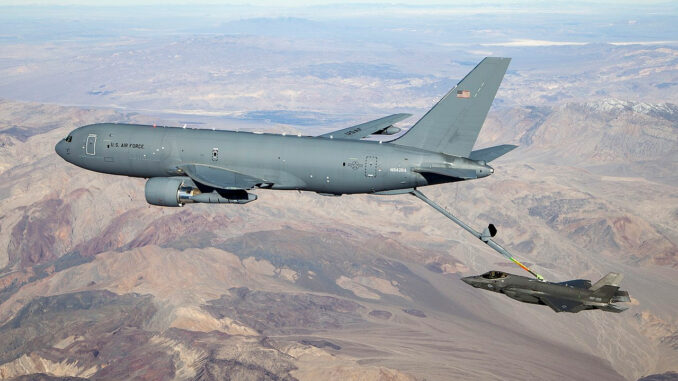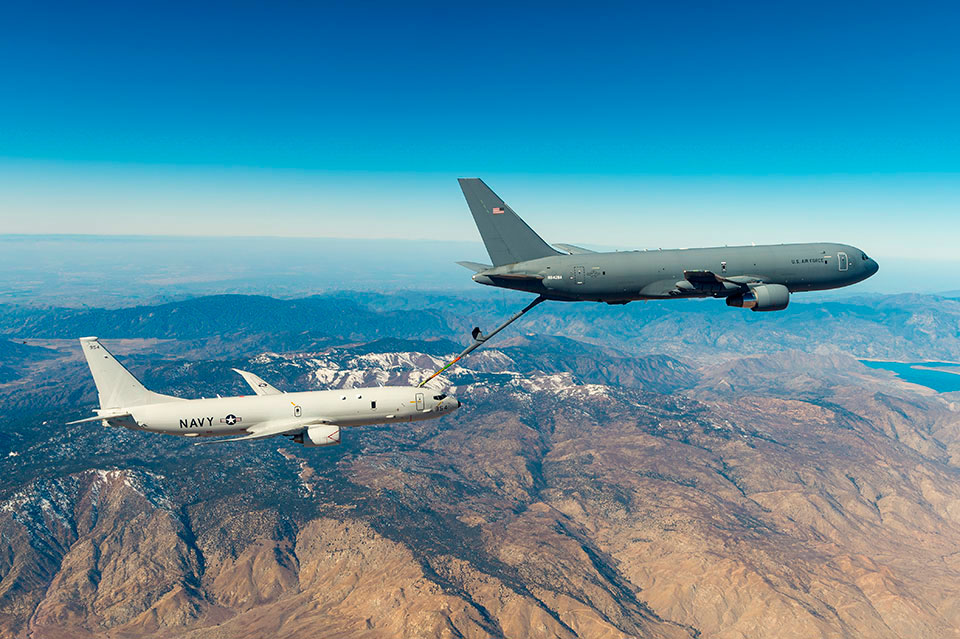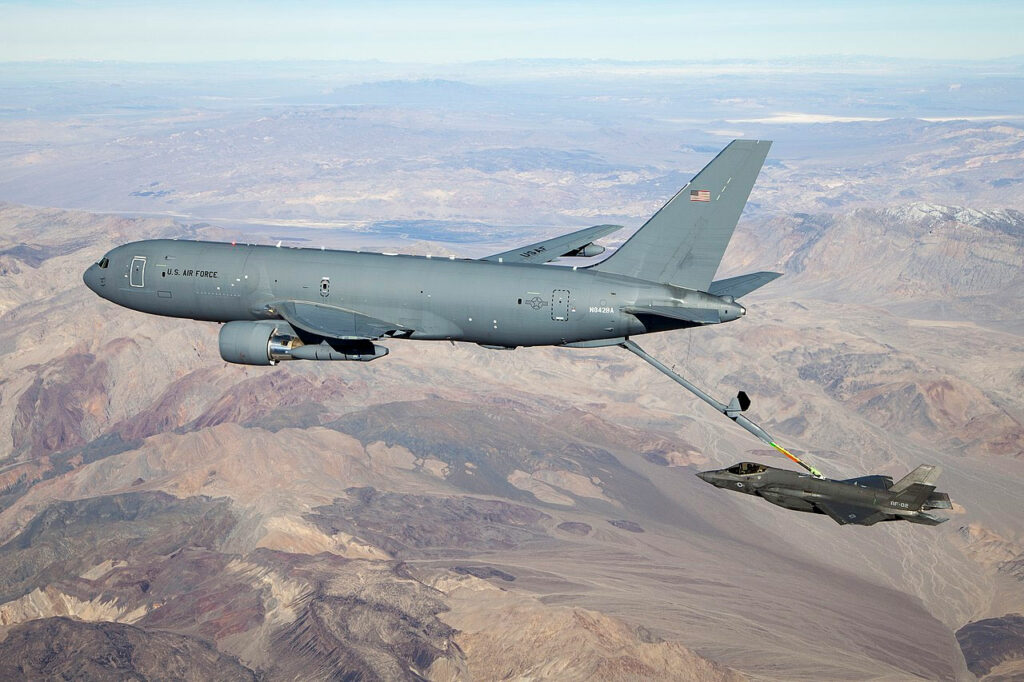
The US Air Force suspends deliveries of KC-46A Pegasus tankers following the discovery of structural cracks on two aircraft.
The US Air Force recently discovered structural cracks on two KC-46A Pegasus tankers currently being delivered. In response, Boeing has temporarily suspended deliveries to identify and correct the cause of the problem. This situation comes on top of a series of technical difficulties encountered by the KC-46A program since its launch, including problems with the refueling boom and the remote vision system. These challenges have resulted in significant cost overruns for Boeing, and have delayed the fleet’s full operational capability.

KC-46A Pegasus cracks discovered
The US Air Force recently discovered structural cracks on two of the four KC-46A Pegasus tankers currently being delivered. The cracks were identified by Boeing during routine pre-delivery inspections at the Military Delivery Center. Although the cracks are not located on the flight surfaces or hinges, they do affect primary or secondary structures of the aircraft, raising concerns about structural integrity and flight safety.
In response to this discovery, the US Air Force has decided to inspect its entire fleet of 89 KC-46As already in service to determine whether this problem is systemic. If similar cracks are detected, the aircraft concerned will undergo repairs before resuming their missions. This situation has led Boeing to temporarily suspend deliveries of the KC-46A until the root cause of the cracks is identified and an effective corrective action plan implemented.
Recurring technical problems on the KC-46A program
The KC-46A Pegasus program has been marked by a series of technical problems since its inception. Among the most notable were failures in the Remote Vision System (RVS), used by operators to guide the refueling boom. This system showed image distortion and depth-of-field problems, making in-flight refueling potentially dangerous and causing operator discomfort.
In addition, the refueling boom itself encountered rigidity problems, complicating refueling of light aircraft such as the A-10 Thunderbolt II. These problems necessitated hardware and software modifications to improve the boom’s flexibility and functionality. In July 2024, fuel pump vibrations were also identified, damaging the aircraft’s air ducts. Boeing had to implement temporary solutions, such as cycling the pump, pending a complete overhaul of the system.
These technical challenges contributed to a decrease in operational availability rates for the KC-46A. According to the Office of the Director of Operational Test and Evaluation’s FY2024 report, the operational availability rate was 65%, well below the 80% target set by the US Air Force. In addition, the Mission Capability Rate, expected to be 90%, also fell, reflecting the program’s continuing difficulties.
Financial impact on Boeing
The technical problems and delays associated with the KC-46A program have had significant financial consequences for Boeing. In January 2025, the company announced a charge of $800 million in the fourth quarter, reflecting higher-than-expected manufacturing costs. This loss comes on top of $7 billion in cost overruns accumulated since the start of the program, due to technical challenges and quality defects requiring correction.
These cost overruns were exacerbated by events such as the seven-week strike by the machinists’ union in the Seattle area in September 2024, which led to an interruption in aircraft production, including the 767, the basis for the KC-46A. These interruptions contributed to increased manufacturing costs and delivery delays, affecting the overall profitability of the program.

Operational consequences for the US Air Force
The KC-46A’s persistent problems have a direct impact on the US Air Force’s operational capabilities. The KC-46A is intended to replace the older KC-135 Stratotanker and KC-10 Extender tankers, the last of which was withdrawn from service in September 2024. However, due to the KC-46A’s technical deficiencies, its full operational capability has been delayed, forcing the US Air Force to continue using KC-135s for longer than planned.
This situation is creating a long transition period, with implications for operational readiness and strategic planning. Delays in the full commissioning of the KC-46A are limiting the US Air Force’s ability to carry out air-to-air refueling missions effectively, which may affect the power projection and responsiveness of the US Air Force.
Challenges ahead
To overcome these challenges, Boeing needs to identify quickly the cause of the recently discovered cracks and implement sustainable solutions to ensure the reliability of the KC-46A. The company is currently engaged in an in-depth analysis to determine whether these cracks are the result of a design flaw, a manufacturing problem or premature structural fatigue. Once the problem has been identified, Boeing will have to work with the US Air Force to implement corrective measures and prevent this type of failure from recurring on other aircraft.
Another major challenge for Boeing is to restore the confidence of the US Air Force and the Pentagon in the KC-46A program. The numerous technical failures and excess costs have raised concerns about the long-term viability of the program. If Boeing fails to resolve these issues satisfactorily, the US Air Force may be forced to consider other options, including extending the KC-135 fleet or developing a new tanker aircraft in partnership with another manufacturer.
Finally, cost management remains a priority for Boeing. The KC-46A program is a fixed-price contract, which means that Boeing must assume cost overruns due to technical problems and delivery delays. The company will therefore have to find a balance between implementing the necessary corrective measures and controlling expenditure, in order to limit financial losses on this program.
War Wings Daily is an independant magazine.